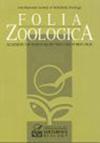Long-term changes in the quantity and quality of supplementary feeding of wildlife: are influenced by game managers?
Q2 Agricultural and Biological Sciences
引用次数: 6
Abstract
Abstract. The natural world is now receiving more and more food of anthropogenic origin, which is widely used by a large number of animal species. Among intentional supplementary feeding, one of the most common activities is the winter feeding of game animals, affecting the size, structure and behaviour of their populations. There is a lack of information, however, on long-term trends in supplementary feeding and changes in the type of feeders and feed provided, which can be crucial to understanding game animal dynamics. Our study is based on data collected in the years 1970–2015 in experimental hunting grounds in western Poland. Wildlife feed was provided in traditional feeders and along the ground (ground strips), the latter designed primarily to protect crops from damage by game animals. The first type of feeding activity decreased significantly, while the second increased significantly during the study period. The most frequent types of feed provided were root crops, cereals, hay and silage. Feed amounts between years had a strong auto-regressive temporal character, with a significant lag effect up to ten years. The total dry mass provided for game animals was also characterized by a significant lag effect, although it was weaker in comparison to individual feed types. The auto-correlation is probably a consequence of the availability and ability to store various types of feed over subsequent winters. We believe that the results presented here are the first to describe the problem of feeding animals over decadal timescales and indicate the modifications to feeding that have taken place, influenced by the animals, crop prices and social factors.野生动物补充喂养的数量和质量的长期变化:是否受到野生动物管理者的影响?
摘要现在,自然界正在接受越来越多的人为来源的食物,这些食物被大量动物物种广泛使用。在有意补充喂养中,最常见的活动之一是冬季喂养狩猎动物,影响其种群的大小,结构和行为。然而,关于补充喂养的长期趋势以及喂食器和饲料类型的变化的信息缺乏,这对于理解游戏动物的动态至关重要。我们的研究基于1970年至2015年在波兰西部实验狩猎场收集的数据。野生动物饲料是在传统的喂食器和沿着地面(地面条)提供的,后者主要是为了保护作物免受狩猎动物的破坏。研究期间,第一类取食活性显著降低,第二类取食活性显著升高。最常见的饲料类型是块根作物、谷物、干草和青贮饲料。年采食量具有较强的时间自回归特征,滞后效应显著,可达10年。为狩猎动物提供的总干质量也具有显著的滞后效应,尽管与单个饲料类型相比较弱。这种自相关性可能是由于在随后的冬季中各种饲料的可用性和储存能力的结果。我们认为,这里提出的结果是第一个以十年为时间尺度描述动物喂养问题的研究,并指出了在动物、农作物价格和社会因素的影响下,喂养方式已经发生了变化。
本文章由计算机程序翻译,如有差异,请以英文原文为准。
求助全文
约1分钟内获得全文
求助全文
来源期刊

Folia Zoologica
生物-动物学
CiteScore
1.70
自引率
0.00%
发文量
0
审稿时长
3 months
期刊介绍:
Information not localized
 求助内容:
求助内容: 应助结果提醒方式:
应助结果提醒方式:


